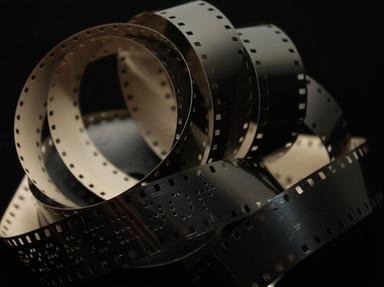Quiz Answer Key and Fun Facts
1. In the 1915 Supreme Court case of Mutual Film Corporation v. Industrial Commission of Ohio, what was the decision made that affected film production for decades?
2. The name most associated with Hollywood's attempts at self censorship was called the Hays Code. Will Hays, a Republican from Indiana who managed Warren G. Harding's Presidential campaign, headed the effort to get around local boards of censorship and saving costs by not having to re-shoot scenes. At the time, film-makers had to pay a fee to local censors if the explanatory or dialogue sign had to be changed, since this was the silent era. There were three general principles to this code. Which of these was NOT among them?
3. When Hays retired in 1945, he was succeeded by Joseph Breen. Breen was known as 'the enforcer' working for Hays. What perception did film-makers have of Breen?
4. While Hollywood struggled to achieve a workable code with the Code, it was the general public that bought tickets. In the 1920s there were three sex scandals that rocked the industry. This led the public to be wary of the morals of the Hollywood crowd. Which of these did NOT occur in the 1920s?
5. Between 1930 and 1934 there was what film historians refer to as a special genre of film. What was the name given to that era today?
6. Of these commercially released films, which was the first to be censored for content?
7. "The Outlaw" was completed in 1941 but it was five years before it was in general release. Controversy centered around the amount of cleavage Jane Russell was allowed to show in the film and on promotional posters that dotted the land. Who was the producer and director of this film?
8. "The Moon Is Blue" (1953) was both directed and produced by Otto Preminger, and was based on a successful Broadway play. The Breen Office came down hard on the film. The screenplay by F. Hugh Herbert was rejected. Why?
9. "Midnight Cowboy" (1969) won three Oscars in 1970 and made Dustin Hoffman and Jon Voight stars. It won for Best Picture, Best Director, and Best Screenplay. What was unusual about the Best Picture Award?
10. Perhaps one of the best films made about censorship of films was the 1988 Italian film "Cinema Paradiso", which won the Oscar for the Best Foreign Language Film. In it, a youth who loved movies developed a special relationship with the projectionist of the village theater. However, the village priest saw all the films first and had undesirable scenes deleted. What was the climax to this film?
Source: Author
Rehaberpro
This quiz was reviewed by FunTrivia editor
jmorrow before going online.
Any errors found in FunTrivia content are routinely corrected through our feedback system.

